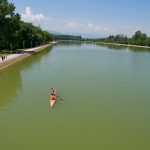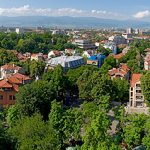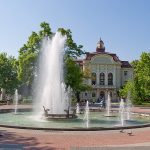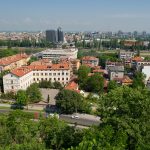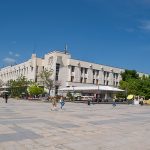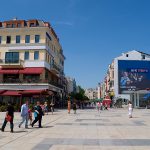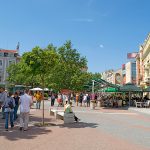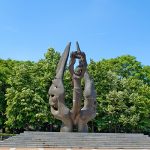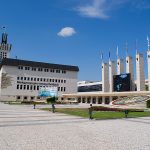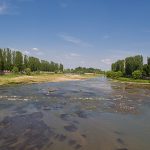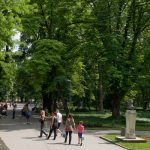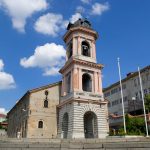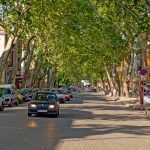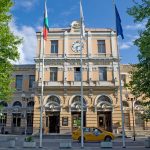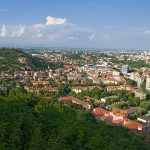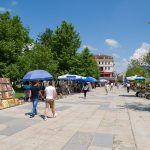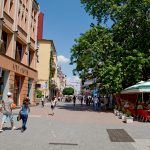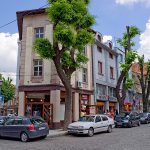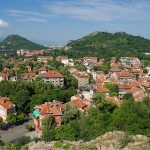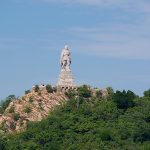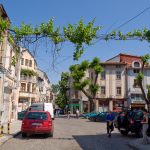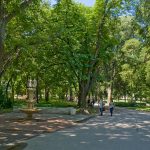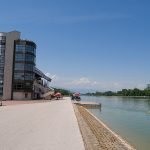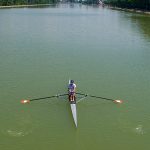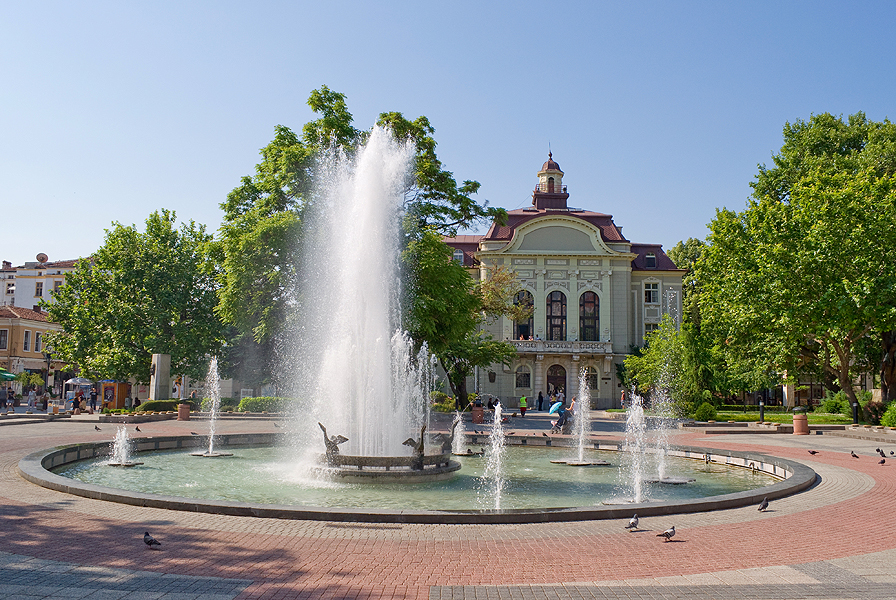
Plovdiv
Plovdiv is the second largest city in Bulgaria and an administrative center of Plovdiv County.
It is situated in the Upper Thracian Plain (Gornotrakiyska Nizina), on the both banks of the Maritsa river.
The population of the city is about 350,000 people. The climate is transitional–continental with mild winters and hot summers. The average temperature in January is +1°С, the average temperature in July is +24°С.
The town in its present appearance was built around seven hills – the hills of Plovdiv (Plovdiv Tepes) which are an inseparable part of the city’s history.
Plovdiv is the oldest city in Europe – the beginning of its history dates back to 4,000 years BC. In the beginning the ancient settlement was situated on the natural elevation between Nebet, Taksim and Dzhambaz hills (the Three Hills).
In ancient times Thracians inhabited the Three Hills and built a fortified settlement – the largest city in Thrace. In the 4th century BC Plovdiv was conquered by Phillip of Macedonia. He gave the city one of its many names – Phillipopolis, and had it surrounded by thick fortified walls.
Later the Thracians regained their power over the city, but after a series of battles in the 1st century AD it became a part the Roman Empire.
During the period of the Roman Empire, Plovdiv (at those times – Trimontium) was an important regional center. The city flourished with a large-scale construction of buildings, facilities and roads. Numerous well-preserved artifacts had remained from those times, such as cobble stoned streets, fortress walls, buildings, water supply and sewerage systems.
The city was returned within the boundaries of the Bulgarian state during the ruling of Khan Malamir (reigned 831 – 836 AD). Over the centuries, the power over the city was passed between the Bulgarians and the Byzantines. The city even briefly became a possession of the knights of the Fourth Crusade. It finally became part of the Bulgarian state in 1344 AD.
The Ottoman troops who invaded in 1364 and gradually conquered Bulgaria, gave new direction of development for the city. The Byzantine architecture was replaced by new buildings with typical oriental features. The new name of the city was Filibe.
During the Bulgarian Revival (18th– 19th century) Plovdiv was an important economic center. The city was home to many wealthy and educated people who traveled across Europe and brought new cultural currents. The rich traders from Plovdiv showed their wealth through the construction of beautiful and richly ornamented houses.
Unlike the brick houses from the beginning of the Bulgarian Revival, which were small and practical, later the art of building developed with more imagination and scope, focusing on splendor and detail. Besides being an architectural center, the city is an important cultural center and has a major contribution to the spiritual awakening of Bulgaria. Plovdiv was of great importance in the struggle for church independence.
On 16 January 1878 the city was liberated after the end of the war between Russia and Turkey. The long-awaited San Stefano peace treaty of 3 March 1878 laid the foundations of the free Bulgarian state.
However, a few months later the Berlin peace treaty clouded the joy of the liberation and tore the state into several smaller pieces, and large border areas were given to neighboring countries. Bulgaria became a small, weak principality.
Plovdiv remained within the autonomous region under Ottoman rule – Eastern Rumelia, and was elected to be its capital. This dramatic period of separation lasted for seven years. During that time, the massive construction went on.
Many new modern administrative buildings were constructed for the needs of the new capital. Meanwhile a specially elected committee prepared an upcoming uprising, planned to bring together the separated regions of the country.
On 6 September 1885 the city was conquered and Eastern Rumelia was again united with the Principality of Bulgaria. This memorable date set the beginning of the new history of the country and is celebrated every year as a solemn day of Plovdiv and an official holiday.
After the Union, Plovdiv remained the second largest and economically important city after Sofia to the present day. The city is a large industrial and commercial center. The famous Plovdiv International Fair, which annually hosts the presentation of goods and exchange of contacts and experience between sellers from all around the world, is conducted here.
The town hosts theater, dancing and movie festivals, and the numerous archaeological finds of Thracian, Roman and Byzantine times not only recall the glorious past, but are successfully combined with the modern architecture of the city.
An example of this is the Roman aqueduct, which has become an indispensable part of Komatevsko Shose road; the Amphitheatre was successfully restored and is presently used for performances. The city has several museums – historical, archaeological, ethnographic, and natural science museum, as well as an Art Gallery and a Drama Theatre.
One of the most famous landmarks is the architectural complex of the Ancient Plovdiv, where many beautiful houses from the times of the Bulgarian Revival had been preserved and restored. Many of them are inhabited to the present day.
Besides cultural attractions, the city offers very good sports and recreation conditions. On one of the city ends lies a rowing base of Olympic size, which offers great conditions for rowing, running and cycling. In the past there were seven hills in Plovdiv.
Nowadays, only six of them are preserved. Markovo hill was turned into pavement for the cobble stoned streets. Those, who decide to count the hills of Plovdiv, should remember that the elevation of the Ancient Plovdiv consists of three hills.
Dzhendem hill, also known as the Hill of Youth is the highest one – it was declared a protected area for its endemic plants and preserved nature. Various animal species can be found there, such as squirrels, jays, hares.
Sahat hill – the hill with the clock tower, has become a park, a favored place for couples and youth companies with guitars. A clock tower, dating back to the 16th century, stands on top of it. The other three hills form the Ancient Plovdiv town. All of the Plovdiv hills are well-maintained parks with paths and benches.
The city is one of the most popular tourist destinations in the country and a cultural and economic center of southern Bulgaria. There are many accommodation options here – from luxurious hotels to hostels.
The main street of the city offers excellent opportunities for entertainment and shopping; the restaurants options are numerous.
Plovdiv, Plovdiv Province, Bulgaria.

